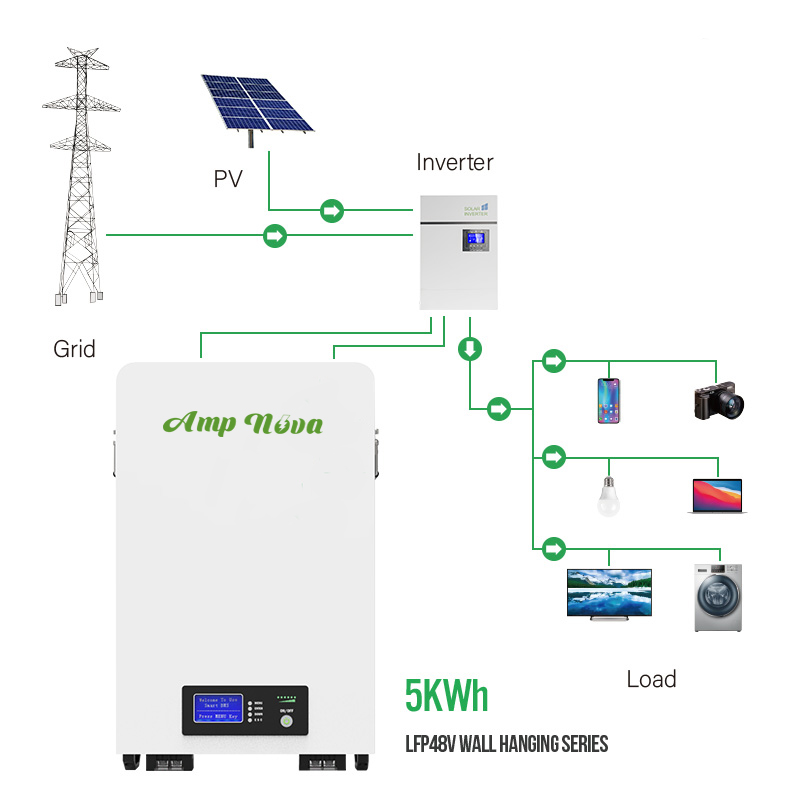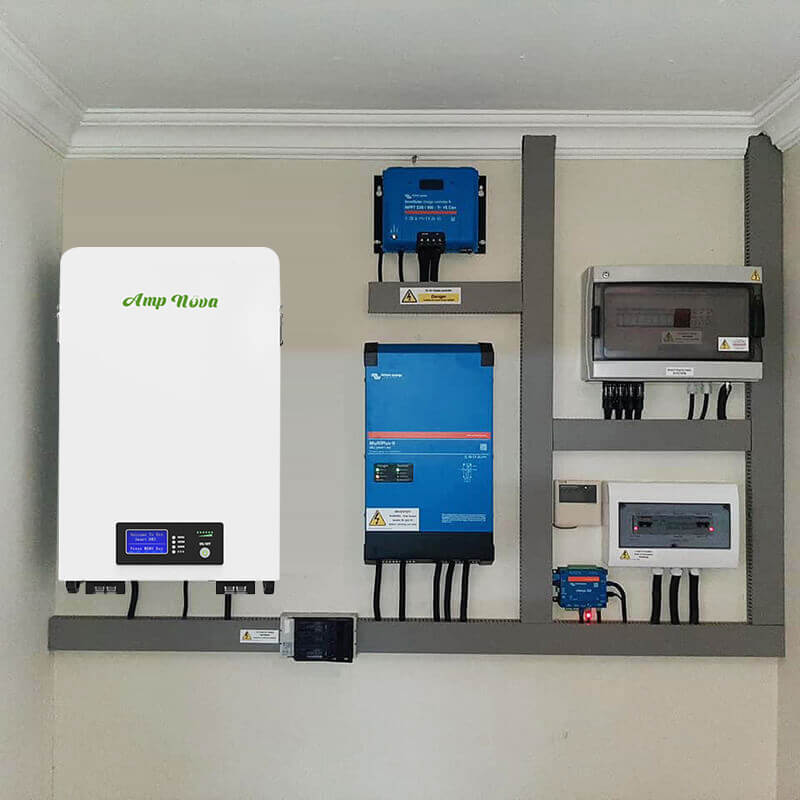Contents
Introduction
In an era marked by the increasing scarcity of fossil fuels and escalating global energy demand, the need for sustainable, reliable energy solutions has never been more paramount. One innovative solution to this pressing concern is transforming traditional residences into “Powerhouse Homes,” self-sufficient abodes powered primarily by renewable energy sources. A key player in this revolution is the 48v LiFePO4 Powerwall, a game-changing lithium-ion battery storage solution. This blog aims to offer a comprehensive guide on the transformation of homes into energy powerhouses using the 48v LiFePO4 Powerwall.
Understanding the 48v LiFePO4 Powerwall
At its core, the 48v LiFePO4 Powerwall is an advanced lithium-ion battery system designed for energy storage. It is packed with a host of features that ensure safety, efficiency, and longevity. Among its benefits are high energy density, a long life cycle, and improved stability, allowing it to outperform traditional lead-acid batteries and other competing technologies.
The system works by storing energy generated from renewable sources like solar panels, which can then be used during power outages, peak demand times, or even to reduce reliance on the grid. It leverages advanced Lithium Iron Phosphate (LiFePO4) technology, known for its superior thermal and chemical stability, which adds to its safety credentials.
When compared to other energy storage systems, the 48v LiFePO4 Powerwall comes out on top in terms of safety, performance, and lifespan. It’s a tangible manifestation of cutting-edge technology that seeks to address modern-day energy storage challenges.

The Concept of a Powerhouse Home
A powerhouse home represents the epitome of energy efficiency and sustainability. It is a residence where energy consumption is significantly offset by energy produced on-site, primarily from renewable sources. The transformation into a powerhouse home offers numerous benefits including substantial savings on energy costs, increased energy independence, and reduced carbon footprint.
There are numerous real-life examples of powerhouse homes across the globe. These are residences that have harnessed the power of renewable energy, most notably solar, and optimized it with efficient energy storage solutions like the 48v LiFePO4 Powerwall, to achieve a near-total reliance on sustainable power.

Steps to Transform Your Home with the 48v LiFePO4 Powerwall
The first step in the process of transforming your home involves assessing your home’s energy needs. This involves considering factors like your household’s average power consumption, peak energy usage times, and the potential for solar energy generation.
Next, you need to plan the installation of the 48v LiFePO4 Powerwall. This step involves determining the number of units required, selecting an optimal location for installation, and arranging for a professional installation service.
The installation of the 48v LiFePO4 Powerwall is a crucial step. It needs to be done by a certified professional to ensure safety and efficiency. Following the installation, it’s important to optimize energy usage in your home. This could involve adjusting energy consumption habits and implementing energy-saving measures.
The final step in the transformation involves monitoring and maintaining your Powerwall system. Regular check-ups can ensure that the system is working optimally and any potential issues can be resolved promptly.
Costs and ROI of Installing a 48v LiFePO4 Powerwall
The initial expenditure for the 48v LiFePO4 Powerwall encompasses the cost of the unit itself, installation fees, and any additional components necessary for setup. Although this may seem like a significant investment, understanding the potential energy savings can help underscore the true value.
When it comes to energy savings, the Powerwall has a dual impact: reducing dependence on grid power during peak hours, thereby saving on your utility bill, and offering a backup solution during power outages, which reduces costs associated with business interruptions.
The return on investment (ROI) on a 48v LiFePO4 Powerwall is influenced by a variety of factors, including your home’s energy needs, local energy prices, and the availability of sunlight for solar-powered homes. As energy prices rise, the Powerwall becomes an increasingly attractive investment.
Furthermore, many regions offer tax credits and incentives for installing energy storage systems and renewable energy solutions. These incentives can significantly offset the initial investment, further improving the ROI.
Success Stories and Case Studies
In the journey to a sustainable future, the 48v LiFePO4 Powerwall has played a pivotal role in numerous success stories. A suburban household, for example, was able to reduce their grid electricity usage by up to 90% by combining solar panels with a Powerwall.
Small businesses too have greatly benefited. One small enterprise used the Powerwall to ensure uninterrupted power during blackouts, drastically reducing downtime and maintaining operational efficiency.
One of the most inspiring use cases of the Powerwall is in off-grid living. In these scenarios, the Powerwall not only ensures a reliable power supply but also allows for complete energy independence.

Conclusion
As we navigate our way toward a sustainable future, the 48v LiFePO4 Powerwall stands as a beacon of innovation, paving the way for energy independence and efficiency. Transforming homes into energy powerhouses not only mitigates the energy crisis but also creates a future where our homes are part of the solution rather than the problem.
We urge you to consider the immense potential that lies in harnessing renewable energy and storing it effectively with the Powerwall. Let’s power our future with sustainability, independence, and innovation.
FAQs
How many LiFePO4 cells are in 48V?
A single LiFePO4 cell typically has a nominal voltage of 3.2V. Therefore, to achieve a 48V battery pack, you would need 15 cells (48V / 3.2V = 15 cells).
Does Powerwall use LiFePO4?
Tesla’s Powerwall uses NMC (Nickel Manganese Cobalt) lithium-ion cells, not LiFePO4. However, battery technologies are rapidly evolving, and it’s always a good idea to check the latest specifications from the manufacturer.
What is the minimum voltage for 48V LiFePO4?
The minimum voltage (also known as the cut-off voltage or discharge end voltage) for a 48V LiFePO4 battery pack is typically around 40V. This is based on the minimum voltage of a single LiFePO4 cell, which is usually around 2.5V-2.8V, multiplied by the number of cells in the pack.
How long does it take to charge a 48V LiFePO4 battery?
The charging time for a 48V LiFePO4 battery depends on the capacity of the battery (measured in Ah) and the power of the charger (measured in A). If you know these two values, you can calculate the charging time by dividing the capacity by the charger power. For example, a 100Ah battery charged with a 20A charger would take approximately 5 hours to charge from completely empty to full.
How many lipo cells for 48V?
A single lithium polymer (LiPo) cell has a nominal voltage of 3.7V. Therefore, to achieve a 48V battery pack, you would need approximately 13 cells (48V / 3.7V = 12.97 cells, rounded up to 13 cells).
What is the maximum voltage of 48V lithium battery?
The maximum voltage (also known as the charge cut-off voltage) for a 48V lithium battery depends on the type of cells used. For LiFePO4 cells, which have a maximum voltage of around 3.65V, a 48V battery pack would have a maximum voltage of approximately 54.75V (3.65V * 15 cells). For LiPo cells, which have a maximum voltage of 4.2V, a 48V battery pack would have a maximum voltage of approximately 54.6V (4.2V * 13 cells).
